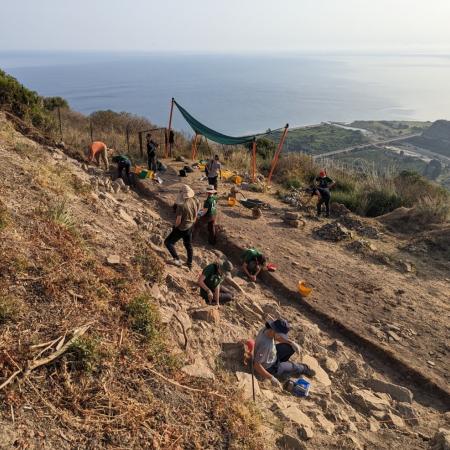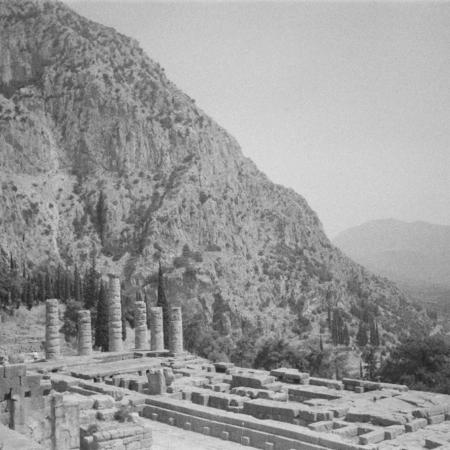Report: Exploring the past in Sicily and Athens
This summer I had the chance to be a part of two incredible opportunities, all with the help and generous funding of Lord Grimstone and Merton College. For the second year in row, I was invited to be a part of the Oxford archaeological team working on Halaesa. Halaesa is a Greco-Roman site, a few kilometres from the coast of Northern Sicily and run by professors Jonathan Prag and Lorenzo Campagna from the Universities of Oxford and Messina respectively.

I spent three weeks in Tusa, the town closest to the site, living with a mixture of archaeologists from the UK and Italy. Our days consisted of site work from 6am to 2pm, with a break in the afternoon for consolidating the work we had done in the morning, writing our reports and exploring the local area. During weekends, we often visited nearby sites such as Tindari and Himera, where we learnt about the history of the sites and their current archaeological projects. During the dig, I worked on two main trenches. In the first, we were excavating the collapse of the temple wall, which involved very delicate cleaning and discussions of stratigraphy. In this trench we found small pieces of mosaic (tesserae) and architectural elements of a Doric temple (gutti), which furthered our understanding of what we believe is the Temple of Apollo higher up on the site. The second trench I worked on discovered the retaining wall of the sanctuary and yielded many animal bones and much pottery. The most interesting finds were a brick with a stamp from the city of Halaesa and a small relief of a leaning Hercules with an inscription. I also worked continuously as a translator between the two teams, working closely with the Italian side to understand the methods of measuring and archaeological drawings as well.

The second opportunity was my time at the British School at Athens as a part of the undergraduate summer course in archaeology and Topography of Greece. I spent three weeks with 30 students from other universities in the UK discussing topics of archaeology and ancient art. I was able to use the BSA’s incredible library facilities, as well as learn about the methods used in their labs and their microscopic petrography project. Furthermore, I was taught by incredible academics such as Dr. Giorgios Mouratidis, Dr. Laura Magno, Dr. Tulsi Parikh and Dr. Rossana Valente, who all shared their areas of expertise with us. During the course, we visited over 45 sites all over Athens and the Peloponnese and some of my favourites included Brauron, Olympia, Bassai, Delphi, Mycenae and of course the inside of the Parthenon. It was an opportunity to learn about archaeology from the Bronze Age up to the Byzantine Empire and it greatly widened my understanding of the history of the area. The course was a great opportunity for me to discuss my ideas with peers as well as to research for my undergraduate dissertation and Masters applications. I can now even say that I have run a race at the original Olympic stadium. The opportunity to see sites and objects in person, instead of simply on a screen, was something for which I will be forever grateful.
These opportunities truly made my summer amazing and cemented even more my love for archaeology and my hopes to study it next year at postgraduate level. I would not have been able to do this without the generosity of the Gerry Grimstone Travel Grant and the donations of Lord Grimstone himself.